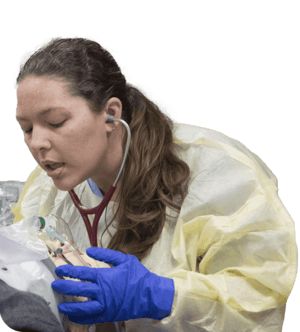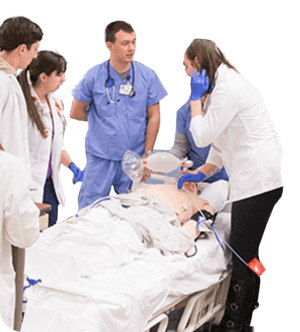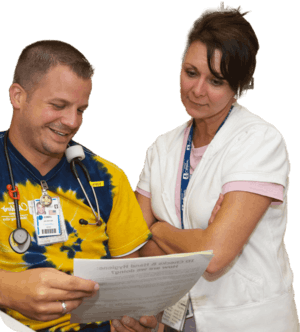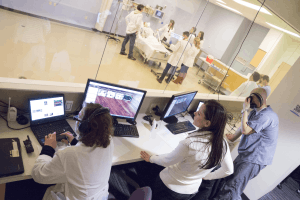Akron Children's Simulation Research & Current Studies
Spanning 30,000 square feet, the Akron Children's Simulation Center for Safety and Reliability is one of the most comprehensive facilities of its kind in the region. We are dedicated to cultivating a provider's abilities and improving patient outcomes by creating realistic situations that reflect the demands healthcare professionals face daily. Whether you need standardized training, or would like a custom program, we can design courses to meet your needs. You may use your own curriculum and staff, or consult with our experienced faculty. The Center also has ongoing opportunities for research engagement.
RCDP Study – closed enrollment June 2017
- This study is in the data collection and analysis phase.
- The study was created to determine if the Rapid Cycle Deliberate Practice (RCDP) method of debriefing would improve outcomes of 3 simulated scenarios performed by residents. Residents had a pre- and post-scenario recorded with the intervention of the same scenario debriefed via RCDP.
ImPACTs
- Improving Pediatric Acute Care through Simulation (ImPACTs) was created in 2012 to ensure that ill and injured children receive the highest quality of emergency care whenever and wherever it is needed.
- 80% of pediatric visits are seen in community EDs, usually without specialty RN and MD staff. Equipment may vary from location to location and policies and procedures may not be optimized to care for the sickest of pediatric patients.
- ImPACTs utilizes simulation to improve pediatric emergency care by addressing gaps identified by the National Pediatric Readiness Assessment and in-situ simulations.
- Performance metrics are reviewed and compared to similar hospitals and pediatric EDs.
- Customized action quality improvement plans are developed with each community ED.
Multi-Patient Simulation
- Multi-patient simulation is an effective tool in fostering clinical reasoning in undergraduate nursing education studies. However, little has been done related to the nurse in a practice setting.
- Clinical and simulation educators at Akron Children's have designed a multi-patient simulation to assess nurses’ clinical reasoning before completion of onboarding orientation.
- The goal is to identify learning needs, resulting in an improvement in patient safety and quality practices
- We are comparing quality indicators of nurses who have participated to those who have not.
Respiratory therapist neonatal intubation skills decay after simulation-based mastery learning
- This is a prospective quantitative study where Akron Children’s respiratory therapists perform neonatal intubations skills checks as standard times after participating in a mandatory simulation-based mastery learning (SBML) curriculum.
- Mastery levels will be defined by a successful intubation with proper technique with ETT placed under 30 seconds of time as assessed using previously validated neonatal intubation checklist.
- Each RT enrolled in the study will have their neonatal intubation skills assessed utilizing the same validated checklist at one, three, six, nine, and twelve months after their SBML session.
- In addition, patient charts will be reviewed twelve months prior to and after each participant’s SBML training session. While no patient health or identifying information will be obtained, we will note intubation success and complication rates pre- and post-SBML.
We are also in the process of developing protocols for the following studies:
- Effectiveness of a disruptive patient curriculum in reducing employee and patient harm
- Effectiveness of a first 5-minute curriculum on team performance during in situ resuscitation scenarios
- Building a Latent Safety Threat (LST) & LST mitigation database to classify LST and mitigation systems and determine best practices in LST reporting and mitigation.














